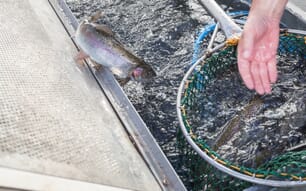Although the disease is not as devastating as EMS, it is expected to cause a shortfall next year.
"Though we may be able to harvest the crop, the survival rate will be affected. We will be able to assess the damage only in the harvest for 2015-16," said Muthukaruppan, president of the Society of Aquaculture Professionals, speaking to the newspaper.
The details of the disease are not yet known.
In the US, scientists from the University of Idaho and Washington State University have found a simple and effective method to combat Coldwater Disease in rainbow trout using some of the trout's own intestinal bacteria as health-giving probiotics.
The probiotics work by secreting a toxic protein, which does not harm the fish but does kill the Coldwater Disease organism, Flavobacterium psychrophilum.
"Coldwater Disease is the number one bacterial illness affecting US trout aquaculture and to a lesser extent Coho salmon," said Douglas Call, professor in the WSU School for Global Animal Health. "Once an outbreak starts, the only way we've had to treat it has been with antibiotics."
US scientists have also discovered a disinfectant that has the potential to treat fungus on catfish eggs.
At the Agricultural Research Service’s Harry K. Dupree Stuttgart [Arkansas] National Aquaculture Research Center, toxicologist David Straus and his colleagues took a close look at the use of peracetic acid—a stabilised mixture of acetic acid (concentrated vinegar) and hydrogen peroxide—for treating catfish eggs.
The toxicity study indicated that a safe treatment rate was 2.2 parts per million (ppm) peracetic acid for 2-day-old yolk-sac fry and 1.3 ppm for 7-day-old swim-up fry.
“The advantage of using peracetic acid is that it does not produce any residues that would harm fry or the environment,” Mr Straus said.
“It is safe and effective to use on fish at a low dose, breaks down rapidly into harmless residues, and does not leave an environmental footprint like other chemicals.”




